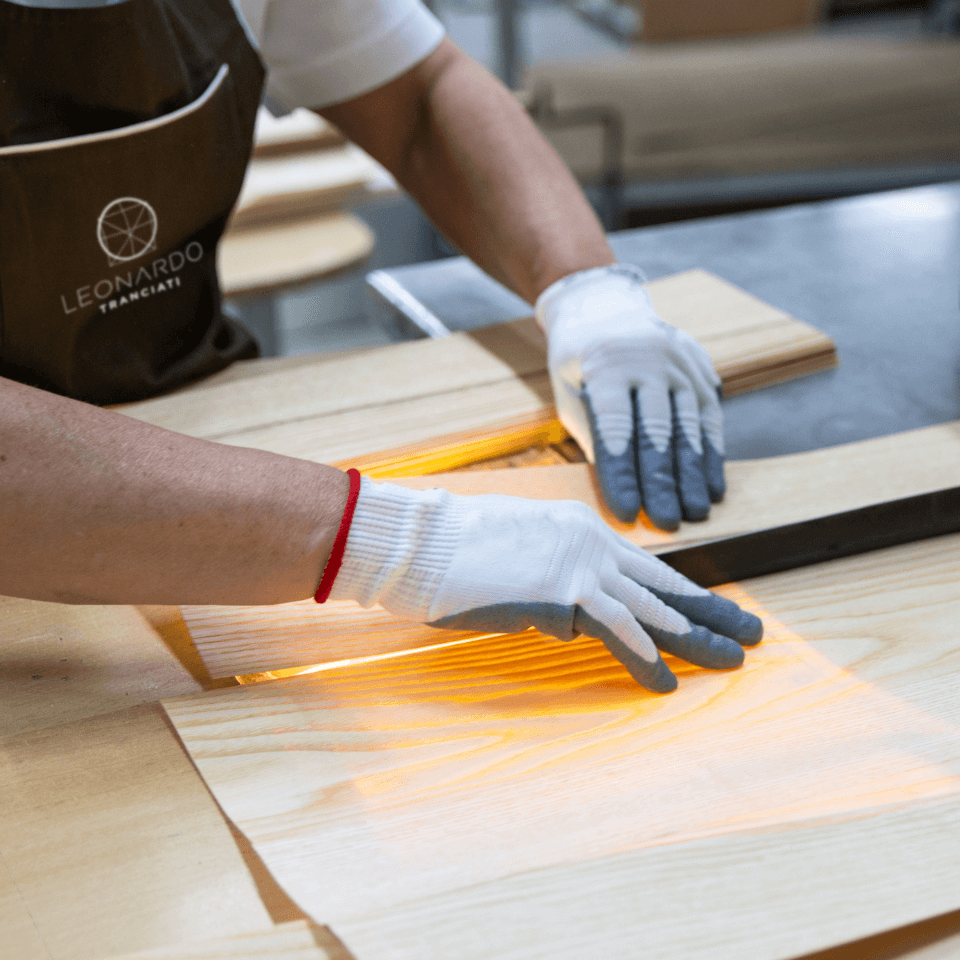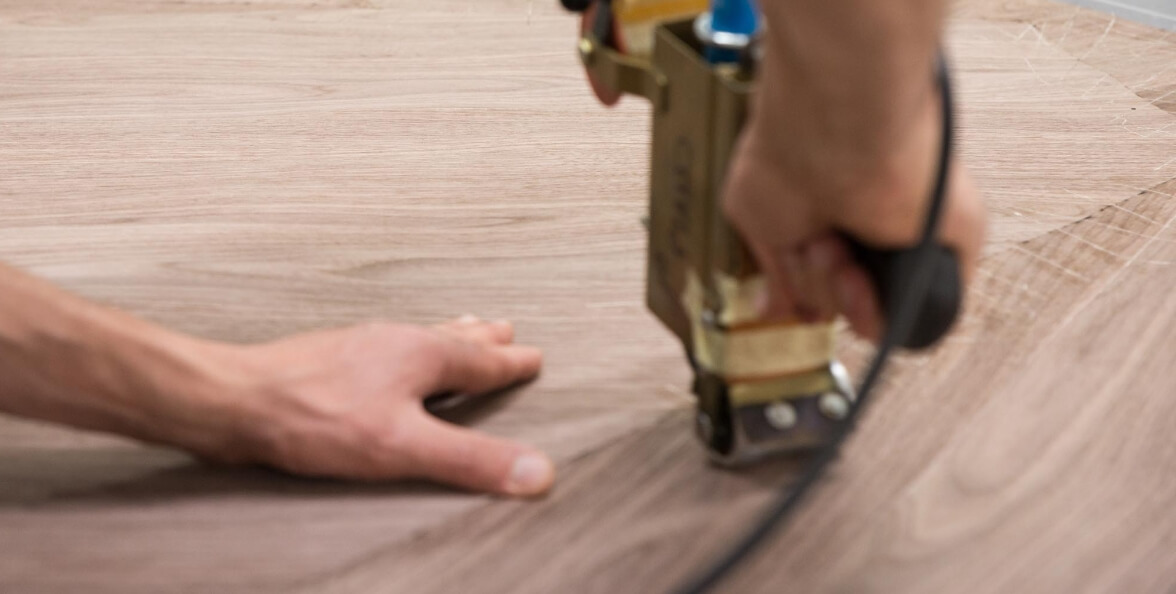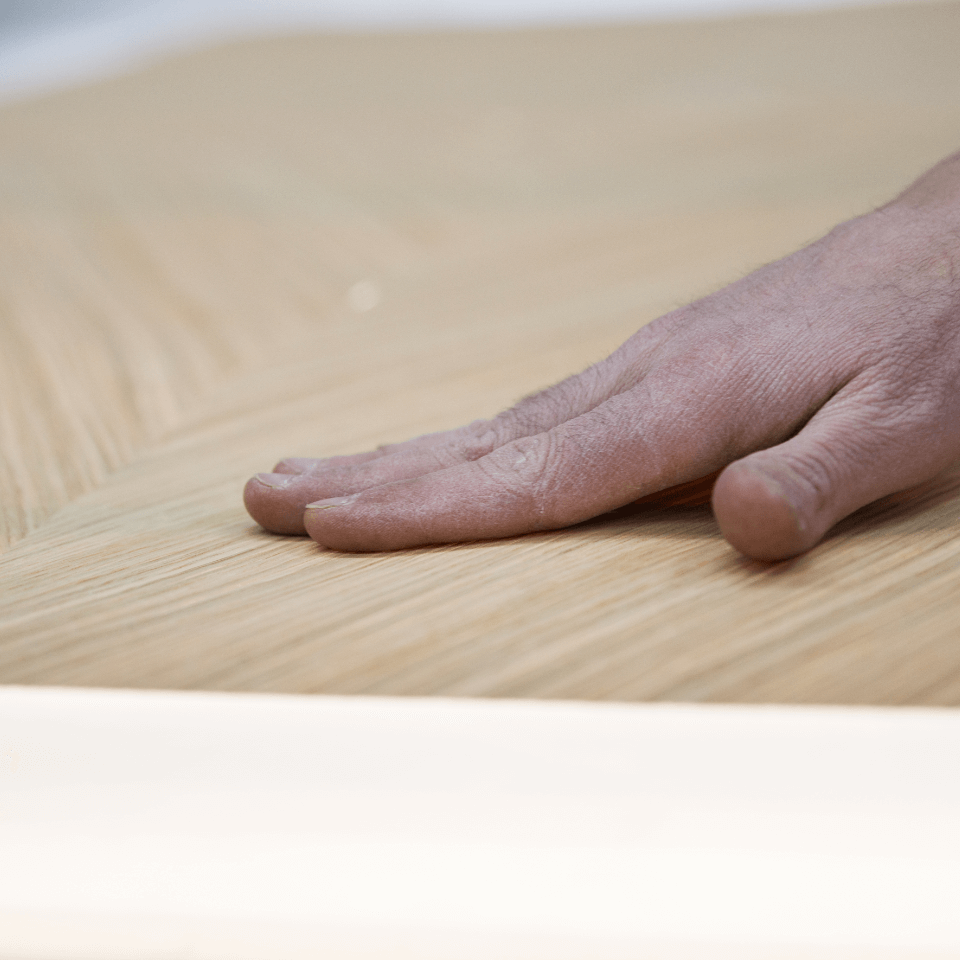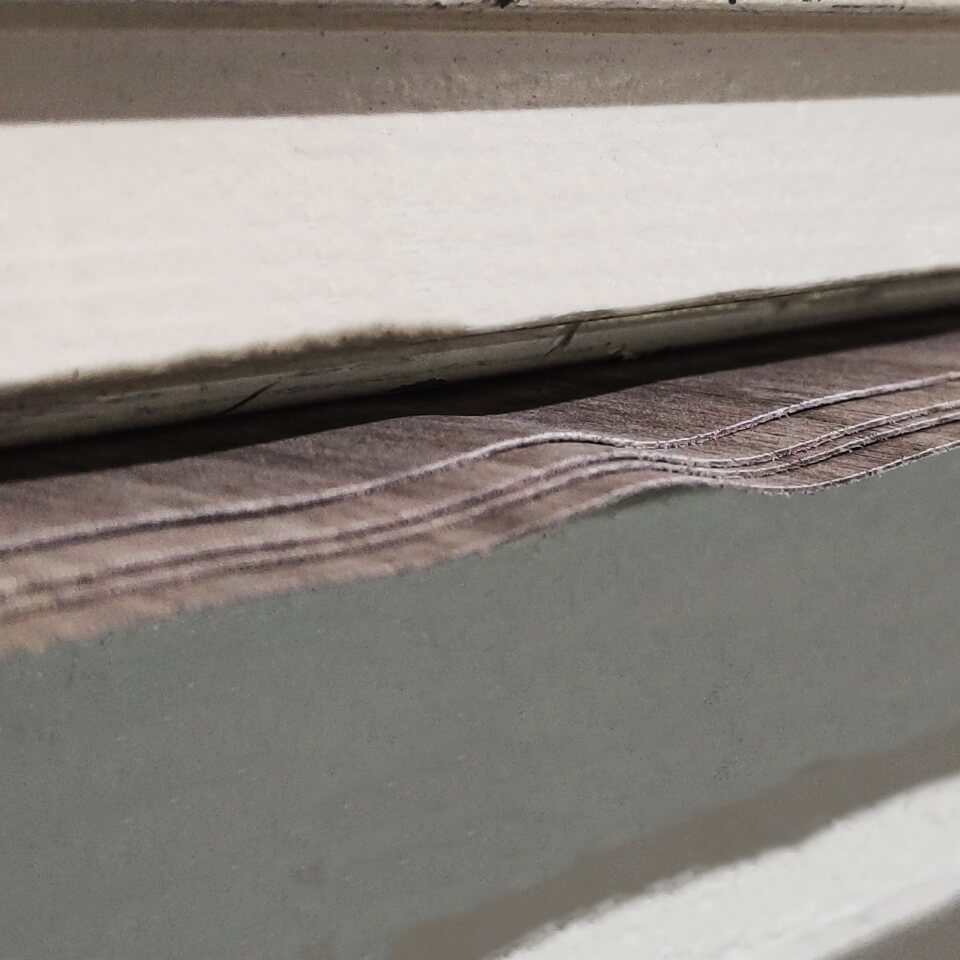Veneer processing
PRODUCTS AND PROCESSING
A complete offer that allows Leonardo Tranciati to be a strategic partner for its customers in all the requests regarding the veneer world.
Each wood species brings with it precise and peculiar characteristics that require to be handled with an extremely professional production cycle, based on technological innovation of machinery, organisation and training of the staff.

Veneer splicing
We are specialised in the veneer splicing for over than 40 years, with continuous investments in technological innovation, organisation of the productive cycle and training of people. Expertise, knowledge of the different wood species and professionality are at the base of the quality and the optimal performances of the spliced products.

Glue splicing
- Use of tested highest-quality glues coloured to match the wood
- Maximum quality in just-in-time processing thanks to direct glue splicing machines
- Big format splicing, up to 3400×2000 mm
- Splicing with grinding cutter for thicknesses up to 40/10
- Quality control on the quality check desk of every single sheet

Wire splicing
- Use of top-quality heat-resistant wire in an appropriate thickness according to the wood species and thickness
- Possibility of manual wire splicing by specialised operators reducing paper consumption
- Quality check on the quality check desk of every single sheet

Backing
We realise the veneer backing in-house for the most various applications, based on the specific requests of the customers, supplying a bespoke product. Depending on the way it is made and on the materials used, the backing can have very different characteristics and functions: in each case a greater strength, to facilitate subsequent industrial and craft processing, but also unexpected flexibility for innovative solutions in the coating of curved surfaces.
Ecological and sustainable, wood becomes an even more extraordinary material, discovering flexibility and softness.
Countless are the materials that can be coupled to veneers of the most different species, form cork to leather, from fabrics to rigid materials as Plexiglas, to special double-sided tape backings.

Veneer Sanding
Thanks to the sanding process, the product is cleaned from oxidation patina and impurities and corrected from thickness imperfections. In this way, veneer can be immediately used in further processing, such as pressing, even on curved surfaces, or worked to be used on special materials.

Veneer ironing
Wood veneers that are not perfectly flat are processed in a hot/cold cycle in order to obtain a flat and easily workable raw material: this is the only way to guarantee the success of the subsequent wood veneer processing stages.